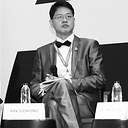Economic Cycle and Geopolitical Cycle: Part I
The Kondratieff Wave, also known as the long economic cycle, is a theory that suggests that capitalist economies go through long-term cycles of expansion and contraction lasting around 50–60 years. These waves are characterized by periods of rapid economic growth, technological innovation, and societal transformation, followed by periods of stagnation, social unrest, and economic decline. The Kondratieff Wave theory is often used in conjunction with other theories of economic cycles, such as the shorter-term business cycle, which typically lasts 5–10 years and is characterized by fluctuations in output, employment, and prices. Together, these theories provide a framework for understanding the complex and dynamic nature of economic development and the challenges faced by policymakers in managing economic growth and stability.
I have read George Friedman’s book, The Next 100 Years: A Forecast for the 21st Century. The book was written in 2009, at a time when both China and Russia were relatively quiet. Although Russia had begun to make assertive moves in 2008, there was still low-intensity conflict between the two countries. However, the subsequent 2014 seizure of Crimea was a different story. Friedman had predicted that Russia would return in 2020, and the ongoing invasion of Ukraine shows that this prediction was largely accurate, albeit with a 2–3 year discrepancy. Friedman also predicted a similar rise for China, but later expected an economic collapse in the country. I’ve noticed that there was a similar prediction from Herman Kahn as well. However, I’ll leave some notes and remarks here as we continue our analysis in the following part.
Actually, the most important innovation in the fourth economic cycle was (and still is) the microprocessor. The Soviet Union was capable of producing mainframe computers, but the microcomputer and software industries require an “open and dynamic” economic policy, which the Soviet Union did not have. As a result, it couldn’t keep up with the economic race with the US and the Western world, and this factor ultimately led to its collapse.
On the contrary, both Taiwan and South Korea were able to establish their microprocessor fabrication and thus catch up with the fourth economic wave, resulting in significant growth in their GDP and GDP per capita. They both outperformed Japan in the later phase. China seems to be following suit, but with the recent technological sanctions, it remains uncertain.
Geopolitics and Economic Interplay
The relationship between economic forces and geopolitical forces is complex and interdependent. Economic cycles, as suggested by Kondratieff, are driven by long waves of innovation and technological progress. These cycles consist of four distinct phases and can last approximately 50–60 years. However, geopolitical forces can also play a significant role in shaping the course of these cycles. The Long Cycle Theory, developed by George Modelski, proposes that the global system goes through four stages: the growth stage, the maturation stage, the stagflation stage, and the crisis stage. During the growth stage, high levels of innovation and economic growth can lead to increased geopolitical cooperation and stability. In contrast, during the maturation and stagflation stages, economic and geopolitical tensions can rise as countries compete for resources and power, potentially leading to conflict or even war. Major geopolitical events, such as wars or revolutions, can disrupt economic cycles and lead to prolonged periods of economic contraction or recession.
Overall, the relationship between economic and geopolitical forces is complex and multifaceted. While economic cycles are driven by long waves of innovation and technological progress, geopolitical forces can significantly impact the course of these cycles and shape the global system over time. Understanding this interplay can be important for predicting and managing global economic and political trends. The Long Cycle Theory offers a framework for understanding the interplay between economic and geopolitical forces, highlighting the importance of geopolitical stability and cooperation in driving economic growth and prosperity.
Geopolitics of New Economic Mode of Production: New Energy
The shift from fossil fuels to renewable and nuclear fusion energy would create a new geopolitical choke point focused on the production and distribution of critical minerals and materials. These materials, such as lithium, cobalt, nickel, and rare earth elements, are essential for the manufacturing and deployment of renewable energy technologies, while nuclear fusion energy relies on tritium and helium-3, which are rare and difficult to produce. Helium-3 can be found on either moon or atmostphere.
Countries that possess significant reserves of these critical minerals and materials or have the technological capability to produce them would have a strategic advantage in the new economic regime. This could potentially shift the balance of power away from traditional oil and gas producing countries to new players in the critical minerals and materials market. As such, securing reliable and sustainable access to these materials will be crucial for countries looking to transition to a renewable energy-based economy and could become a key focus of international relations and geopolitics in the coming years.
Key Technologies
AI, AI-based microprocessor, nuclear fusion energy, new type of solar cell, new type of battery, additive manufacturing, cirrus data mesh, advance robotic technology, quantum computing among others. Also think about MBNRIC technologies.
“Cirrus data mesh” is an innovative term that could potentially be used to describe a decentralized and distributed data storage and processing system that is optimized for high-altitude and high-performance computing. The term “cirrus” is associated with high-altitude clouds, which could be a metaphor for the high-altitude computing capabilities of the system, while “data mesh” (adopt from data lake) describes a distributed network of nodes that work together to store and manage data in a secure and efficient manner.
